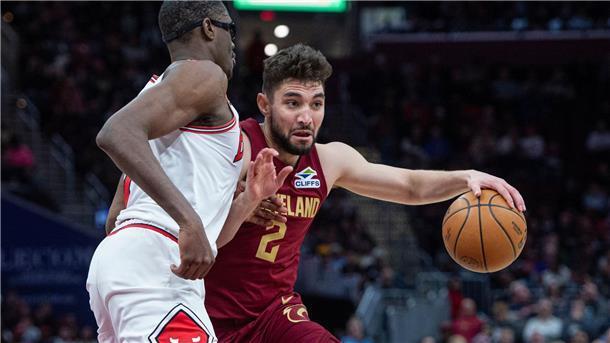In the wake of yet another disappointing playoff exit, the Cleveland Cavaliers find themselves at a crossroads, prompting a renewed examination of the team’s trajectory and leadership. The Cavaliers’ collapse in the postseason not only raises concerns about their immediate future but also resurrects a host of lingering questions that have plagued the franchise for years. As players and coaches alike face scrutiny from fans and analysts, it is imperative to dissect the factors contributing to this downturn and consider the implications for the team moving forward. In this article, we delve into the complexities of the Cavaliers’ situation, exploring the decisions, strategies, and roster dynamics that led to their recent struggles and what it all means for the franchise’s aspirations and identity in the competitive landscape of the NBA.
Cavaliers’ Second-Half Failures: Analyzing the Breakdown in Strategy
The Cavaliers have once again fallen prey to a familiar nemesis: their own inability to maintain consistency in the second half of games. Despite entering halftime with a lead, the team’s performance often deteriorates, raising essential concerns about their strategic approach. Factors contributing to this trend include:
- Lack of Adjustments: Opposing teams have adapted to the Cavaliers’ strategies, exposing the coaching staff’s failure to counteract these changes effectively.
- Stagnant Offense: The ball movement that defines their play in the first half often vanishes after intermission, leading to isolation plays and missed opportunities.
- Defensive Lapses: A drop-off in defensive intensity allows opponents to exploit mismatches, particularly in key moments.
Examining the Cavs’ second-half performance metrics reveals a stark decline in both efficiency and effectiveness. A breakdown of their key statistics shows a dip in:
| Metric | First Half | Second Half |
|---|---|---|
| Field Goal Percentage | 49% | 42% |
| Turnovers | 8 | 14 |
| Points Allowed | 50 | 65 |
This decline not only underscores the need for immediate rectification but also raises fundamental questions about player conditioning, mental fortitude, and game-planning as they look ahead to critical matchups.
Revisiting Team Dynamics: Can Leadership Changes Spark a Revival?
The recent upheaval in the Cavaliers’ front office and coaching staff raises a pivotal question about the impact of leadership changes on team performance. Historically, franchises that undergo significant shifts in management or coaching often experience a revival, as new perspectives and strategies take root. However, the Cavaliers’ current trajectory suggests a deeper issue that may not be resolved through leadership alone. Factors that influence team dynamics include:
- Player Chemistry: How well do team members connect on and off the court?
- Coaching Philosophy: Does the new leadership align with the players’ strengths and weaknesses?
- Leadership Style: Is the approach more collaborative or autocratic, and how does that affect player morale?
As the Cavaliers seek to bounce back from their recent collapse, the effectiveness of their leadership changes will undoubtedly hinge on their ability to foster a cohesive atmosphere. The importance of maintaining a clear and effective communication strategy cannot be overstated; it is essential in harmonizing the team’s vision. A look at the following table illustrates how recent coaching changes have historically influenced team outcomes in the league:
| Team | Season | Leadership Change | Outcome |
|---|---|---|---|
| Cavaliers | 2022-2023 | New Head Coach | Playoff Miss |
| Warriors | 2019-2020 | New Head Coach | Championship Win |
| Bulls | 2020-2021 | New Management | Playoff Appearance |
This data underscores that while a change in leadership can indeed spark a revival, it requires more than just fresh faces; cultivating a strong team culture is equally crucial. The Cavaliers’ future successes will depend significantly on how their new leadership navigates the complex interplay of talent, morale, and strategic alignment moving forward.
Future Outlook: Key Adjustments Needed for a Competitive Rebirth
The Cleveland Cavaliers are at a pivotal crossroads following their recent shortcomings, and several strategic adjustments are imperative for revitalization. The organization must prioritize a more aggressive approach in roster development, particularly through a combination of shrewd trades and targeted draft picks. A re-examination of player performance metrics will also be critical in identifying underperforming assets and addressing the gaps in their defensive and offensive schemes. Key focus areas should include:
- Enhancing player synergy: Building a cohesive unit that complements each player’s skill set can elevate overall performance.
- Investing in analytics: Leveraging advanced statistics to inform decisions on player acquisitions and game strategy will provide a competitive edge.
- Player development programs: Implementing robust training and mental wellness initiatives to unlock hidden potential in younger players.
As the Cavaliers look ahead, it’s essential to also improve their operational culture. A transparent communication strategy between management, coaches, and players will foster trust and accountability. Maintaining a proactive relationship with fans and stakeholders can galvanize community support and investment in the franchise’s future. Furthermore, assessing staff performance and making necessary changes within the coaching ranks could bring fresh perspectives. Consider the following table that highlights potential coaching adjustments based on recent team performance:
| Coaching Aspect | Current Status | Recommended Change |
|---|---|---|
| Offensive Strategy | Static Playcalling | Dynamic, adaptable schemes |
| Defensive Focus | Individual Assignments | Team-oriented defensive drills |
| Rotation Management | Inconsistent Minutes | Balanced playing time adjustments |
Key Takeaways
As the dust settles on the Cleveland Cavaliers’ disappointing performance, fans and analysts alike are left grappling with the implications of this collapse. The echoes of past failures resonate louder than ever, prompting critical questions about the team’s direction, leadership, and ability to regain its competitive edge. With a roster brimming with talent, the expectation for success was palpable, making this recent downturn all the more difficult to digest. As the Cavaliers look to regroup, it remains to be seen whether they can reclaim their former glory or if they will continue to be haunted by the shadows of unfulfilled potential. The upcoming months will be crucial for the franchise, as strategic decisions loom large in the face of mounting pressure. One thing is certain: the path forward will require not only a reassessment of on-court strategies but also a deep dive into the very fabric of the organization itself. The questions surrounding the Cavaliers’ future are as pressing as ever, and fans are eagerly awaiting answers.














